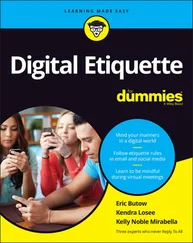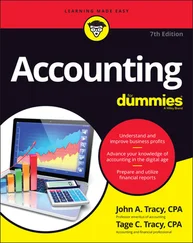Kenneth W. Boyd - Cost Accounting For Dummies
Здесь есть возможность читать онлайн «Kenneth W. Boyd - Cost Accounting For Dummies» — ознакомительный отрывок электронной книги совершенно бесплатно, а после прочтения отрывка купить полную версию. В некоторых случаях можно слушать аудио, скачать через торрент в формате fb2 и присутствует краткое содержание. Жанр: unrecognised, на английском языке. Описание произведения, (предисловие) а так же отзывы посетителей доступны на портале библиотеки ЛибКат.
- Название:Cost Accounting For Dummies
- Автор:
- Жанр:
- Год:неизвестен
- ISBN:нет данных
- Рейтинг книги:4 / 5. Голосов: 1
-
Избранное:Добавить в избранное
- Отзывы:
-
Ваша оценка:
- 80
- 1
- 2
- 3
- 4
- 5
Cost Accounting For Dummies: краткое содержание, описание и аннотация
Предлагаем к чтению аннотацию, описание, краткое содержание или предисловие (зависит от того, что написал сам автор книги «Cost Accounting For Dummies»). Если вы не нашли необходимую информацию о книге — напишите в комментариях, мы постараемся отыскать её.
Cost Accounting For Dummies
Cost Accounting For Dummies
Cost Accounting For Dummies — читать онлайн ознакомительный отрывок
Ниже представлен текст книги, разбитый по страницам. Система сохранения места последней прочитанной страницы, позволяет с удобством читать онлайн бесплатно книгу «Cost Accounting For Dummies», без необходимости каждый раз заново искать на чём Вы остановились. Поставьте закладку, и сможете в любой момент перейти на страницу, на которой закончили чтение.
Интервал:
Закладка:
Costs are part of almost all the CVP formulas you use. But (shock and amazement!) some costs are not part of your decision-making.
Sunk costs ( past costs or retrospective costs) aren’t relevant when you make decisions about the future. By contrast, fixed costs are relevant if they aren’t sunk. A fixed cost that you may have to pay in the future (depending on a business decision) is a relevant cost.
When an airline sells you a ticket a few days in advance of your departure, you can be sure most of the costs of the flight have already been incurred (sunk). Costs include the plane’s maintenance and fuel, salaries for the crew, and the fee paid for the gate at the airport. In fact, the cost of those tasty peanuts they serve has been factored in, too. Nearly all the costs for the flight aren’t fixed costs but are past or sunk costs. The airline can’t change them.
The timing of your ticket purchase is perfect for the airline. Most of the ticket price goes toward profit. That’s because most of the costs have already been incurred.
But something different happens when you buy a ticket six months in advance. The timing might be good for you but dicey for the airline. Whereas you may buy a discounted ticket, many costs for the flight can change. For example, the airline might have to pay more for fuel or have to increase flight attendant salaries. Of course, there’s a chance (slim) that fuel prices will go down, flight attendants will work for lower wages, or the airline will negotiate lower gate fees with the airport.
The rule of thumb is the more time you have before providing a product or service, the more control you have over costs. If you can take action to change costs, they aren’t past or sunk costs. As you get closer to delivering your product or service, more costs become sunk costs.
Using Cost-Volume-Profit Analysis to Make Savvy Business Decisions
Your business decisions have consequences. That’s why you get the big bucks! Use CVP to avoid problems (or at least to see them coming).
Deciding to make a product or offer a service is a big decision. You incur costs, and if you don’t meet the level of sales needed to cover costs, you incur a loss. Incurring a loss might also reduce your cash to operate going forward. Finally, a decision to make product A may mean there are no resources to make product B. (After all, you don’t have unlimited resources to produce everything!) Sometimes this is called opportunity cost, giving up the second-best choice to do the first choice.
Use cost-volume-profit analysis for several common decisions, such as deciding whether or not to advertise, deciding on prices for your products, and deciding how to work with the sales mix to improve profits.
You can also use CVP to calculate the impact of taxes on profit (see the section “ The Tax Man Cometh, the Profits Goeth”).
Deciding to advertise
When you advertise, you obviously spend company resources. You need to know if the additional cost will generate higher profits.
A marketing executive I know used to tell potential clients, “If you don’t advertise, nothing happens.” I know he was trying to sell advertising, but he had a point. You need to consider the financial impact of your decision to advertise. Specifically, will your sales increase to “make up” for the advertising expense and result in higher profits? Cost-volume-profit is the perfect tool to assess advertising decisions.
 The old saying is, “It pays to advertise.” But it costs, too. Did you ever hear the old not-so-funny costing joke? CFO: “And further, ladies and gentlemen of the board, think of the money we’ll save by not advertising!” That guy is now a hobo, roasting weenies under a railroad bridge somewhere.
The old saying is, “It pays to advertise.” But it costs, too. Did you ever hear the old not-so-funny costing joke? CFO: “And further, ladies and gentlemen of the board, think of the money we’ll save by not advertising!” That guy is now a hobo, roasting weenies under a railroad bridge somewhere.
Assume your business sells books online, and your sales total 5,000 units. Your sale price is $25 per unit, variable costs are $15 per unit, and fixed costs total $10,000.
Use the formula for the breakeven point, and solve the formula for profit:
Profit = $25 × (5,000) – $15 × (5,000) – $10,000
Profit = $125,000 – $75,000 – $10,000
Profit = $40,000
So far, so good. Next, you decide to spend $7,000 on advertising. The cost is fixed, regardless of how many books you sell. Total fixed costs increase from $10,000 to $17,000.
You expect the advertising to increase your book sales by 10 percent. The new total would be 5,500 units (5,000 units × 110%). What is your new profit level?
Profit = $25 × (5,500) – $15 × (5,500) – $17,000
Profit = $137,500 – $82,500 – $17,000
Profit = $38,000
In this case, you’re actually worse off. Your profit is $2,000 lower than before. For this product, at this time, the advertising didn’t work. The correct decision here is not to advertise, because your profit will decrease.
What if sales increase 20 percent? Plugging your new sales number of 6,000 into the formula, you’ll see a $43,000 profit. In this case, you’re better off with the advertising expense. Your profit is $3,000 higher. The cost of advertising is the same, so it’s possible you spent the advertising dollars in a better way.
Lowering your price without losing your profit
Just about everyone has shopped at the big discount stores that advertise low prices. Competitive pricing is a tool they use to get customers into the store. As a business owner, you can attract more sales by lowering prices, too. At what point would a price cut be too much — the point where you don’t generate a profit? Cost-volume-profit answers this question.
Imagine that you own a small chain of pizza parlors. You’re analyzing sales and costs for one type of pizza: a 16-inch pizza that has always sold well. Sales have increased in the past when you’ve offered a price cut, so you decide to do it again. Also, you’re moving into a big holiday weekend, and you don’t want to lose sales to competitors.
Your pizza price is $20 per unit. Your variable costs are $8 per unit. Fixed costs total $20,000. You forecast 10,000 pizza sales. Here’s how your profit looks before you reduce your prices:
Profit = $20 × (10,000) – $8 × (10,000) – $20,000
Profit = $200,000 – $80,000 – $20,000
Profit = $100,000
You estimate that sales will increase by 25 percent if you cut the price to $16. Your fixed costs won’t change. Here’s the impact of the price cut on profits.
The new sales in units is 10,000 × 125% = 12,500 units. Here’s the new profit level:
Profit = $16 × (12,500) – $8 × (12,500) – $20,000
Profit = $200,000 – $100,000 – $20,000
Profit = $80,000
Oops! Your profit’s lower by $20,000. You may have cut the price too much. Trouble is, the increased number of units sold sent the total variable cost up. Use this analysis before you cut the price — before you make a decision that would reduce your profit!
 If your business is family-owned, you have one or more family members who might be upset with a $20,000 reduction in profit. They might have warned you, so look before you leap. Otherwise, you may hear the four worst words in the English language: “I told you so.”
If your business is family-owned, you have one or more family members who might be upset with a $20,000 reduction in profit. They might have warned you, so look before you leap. Otherwise, you may hear the four worst words in the English language: “I told you so.”
Now you’re aware that a $4 price cut (from $20 to $16) would be too much. How would your profit look with a price of $18? As a bonus, you negotiate a lower lease payment on your store space. Assume the same level of sales (12,500 pizzas) and $15,000 in fixed costs:
Читать дальшеИнтервал:
Закладка:
Похожие книги на «Cost Accounting For Dummies»
Представляем Вашему вниманию похожие книги на «Cost Accounting For Dummies» списком для выбора. Мы отобрали схожую по названию и смыслу литературу в надежде предоставить читателям больше вариантов отыскать новые, интересные, ещё непрочитанные произведения.
Обсуждение, отзывы о книге «Cost Accounting For Dummies» и просто собственные мнения читателей. Оставьте ваши комментарии, напишите, что Вы думаете о произведении, его смысле или главных героях. Укажите что конкретно понравилось, а что нет, и почему Вы так считаете.












